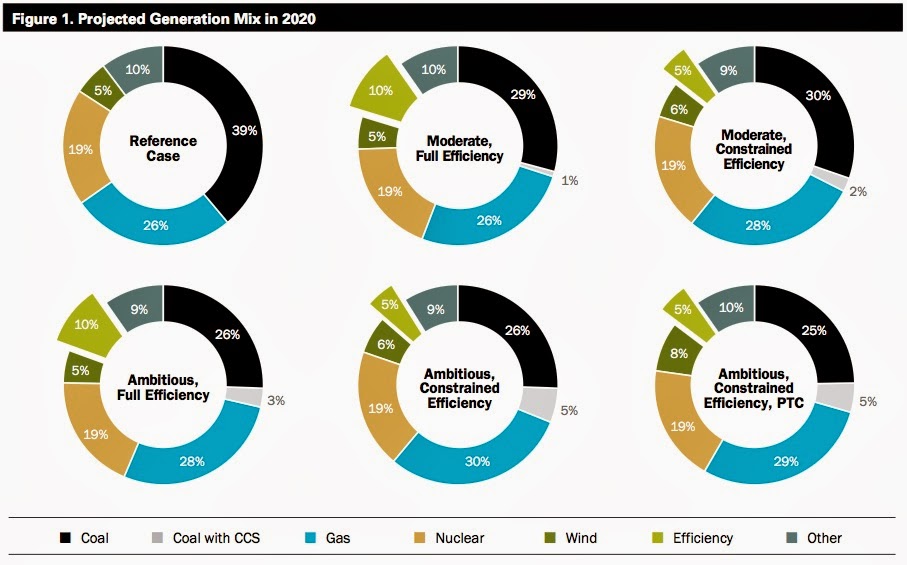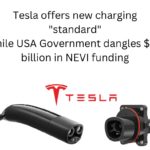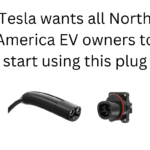The NRDC has just released a report which demonstrates to the EPA how the U.S. could achieve aggressive climate change and carbon pollution reduction goals without costing very much to implement much less breaking the economy. The plan relies heavily on efficiency improvements, followed by renewable energy system deployments, and enforced by strong carbon pollution regulations on power plants.
The NRDC notes that, currently, carbon is not regulated in power plant emissions. The EPA, under the Clean Air Act, has the authority to regulate power plant emissions, and while the Agency regulates emissions like sulfur and arsenic, it doesn’t regulate carbon. But carbon emissions are a primary culprit in climate change, and are clearly already causing harm to America.
The EPA is planning to unveil proposed carbon pollution regulations by June 1, 2014, and after a comment period expects to enact those regulations in June 2015.
In the U.S. 40% of the carbon emissions come from power plants, 2.2
billion tons per year. The measures proposed by the NRDC would reduce
power plant carbon emissions between 470-700 million tons per year.
Let’s look at the details of the NRDC’s proposal. It relies on these key items
The EPA would set state-specific emission rates, reflecting the diversity of the nation’s electricity sector as well as the state-by-state structure of Section 111(d).
Power plant owners and states would have broad flexibility to meet standards in the most cost-effective way, through a range of technologies and measures.
The EPA will tally up the share of electricity generated by coal or natural gas per state. Based on that, the agency would set per-state emissions reduction targets. The baseline is 2,100 pounds of CO2 emissions per megawatt-hour of coal produced electricity, and 1,100 pounds of CO2 per megawatt-hour of natural gas produced electricity. The goal is to reduce emissions drastically, to perhaps 1,400 pounds of CO2 per megawatt-hour at coal plants, and 700 pounds of CO2 per megawatt-hour at natural gas plants.
The emissions reduction targets also get applied to each power plant, and it is up to plant operators to meet the targets. Plants whose emissions are above the state standard have to lower their emissions.
They can switch fuels, for example, to a mix of coal and natural gas, or certain kinds of biomass. Or they can install equipment to capture carbon. Or they can install a more efficient boiler.
Utility companies that own several plants could average their fleet and perhaps meet the targets, or could retire the dirtiest plants and build new plants that run on cleaner fuels.
Finally, the NRDC plan talks about carbon credits and carbon credit trading. Low-emissions or zero-emissions electricity generators would earn credits. Those credits could be sold to companies that own dirty power plants.
It’s with carbon credits that energy efficiency programs enter the NRDC’s plan. They propose that a state-run efficiency program could earn carbon credits based on the electricity consumption that is avoided. This means the state program could earn revenue to pay for the program through carbon credit sales.
Projections are that under the NRDC proposal carbon emissions savings would be significant. Further, there would be a variety of cost savings benefits across the economy – lower electricity bills, and lower health care costs. The savings would, according to the NRDC, be more than enough to pay for the cost of compliance on the part of utility companies.
You can read the proposal here: http://www.nrdc.org/air/pollution-standards/![]() and http://www.nrdc.org/air/pollution-standards/files/pollution-standards-IB-update.pdf
and http://www.nrdc.org/air/pollution-standards/files/pollution-standards-IB-update.pdf![]()
- Highway design could decrease death and injury risk, if “we” chose smarter designs - March 28, 2015
- GM really did trademark “range anxiety”, only later to abandon that mark - March 25, 2015
- US Government releases new regulations on hydraulic fracturing, that some call “toothless” - March 20, 2015
- Tesla Motors magic pill to solve range anxiety doesn’t quite instill range confidence - March 19, 2015
- Update on Galena IL oil train – 21 cars involved, which were the supposedly safer CP1232 design - March 7, 2015
- Another oil bomb train – why are they shipping crude oil by train? – Symptoms of fossil fuel addiction - March 6, 2015
- Chevron relinquishes fracking in Romania, as part of broader pull-out from Eastern European fracking operations - February 22, 2015
- Answer anti- electric car articles with truth and pride – truth outshines all distortions - February 19, 2015
- Apple taking big risk on developing a car? Please, Apple, don’t go there! - February 16, 2015
- Toyota, Nissan, Honda working on Japanese fuel cell infrastructure for Japanese government - February 12, 2015











